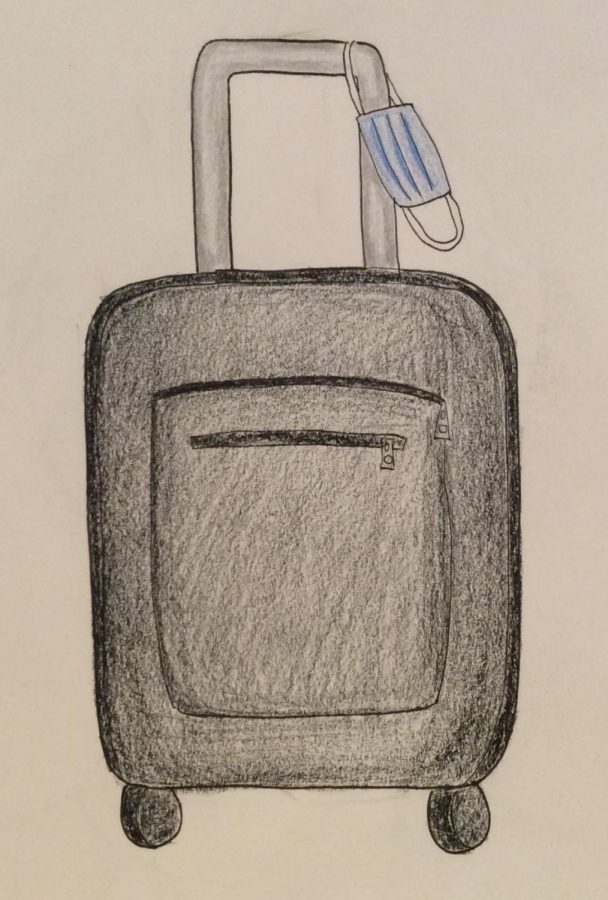Despite COVID-19, Some Menlo Families Travel During School Breaks
Many Menlo families are continuing to travel during the pandemic, taking certain safety precautions to avoid catching or spreading the coronavirus. Staff illustration: Andrea Li.
March 4, 2021
As a result of COVID-19, many Menlo families have traveled during school and work holidays. However, traveling during a pandemic brings possible safety concerns, and for many people, it is a matter of weighing the risks against the benefits.
Airports have put in place a number of precautions, such as mask mandates and the requirement of a negative COVID-19 test within three days of traveling. However, for some people, these precautions are not enough to feel safe, and they believe that additional measures should be made. Freshman Mikey McGrath traveled to Hawaii during Menlo’s holiday break in December. “We made an effort to avoid touching anything both at the airport and on the plane,” McGrath said.
“I had a face shield in my backpack just in case, in addition to my two masks, and I used alcohol wipes whenever touching or sitting anywhere,” senior Troy Demmon said after traveling over the holiday break. The Centers for Disease Control and Prevention (CDC) also recommends additional safety measures when traveling, such as using hand sanitizer, bringing extra masks and avoiding large gatherings and contact with people outside one’s household.
Even for some who feel comfortable in their ability to avoid COVID-19, travel is made more stressful with a number of requirements and regulations on top of the rules already in place for air travel. “There was just so much on our minds, such as not touching anything and staying socially distanced while at the airport,” McGrath said.
Despite the risks and discomforts of traveling during COVID-19, for many, taking a vacation is worth it. But each circumstance is different when factoring in medical concerns and travel options. Senior Sabette Grieve traveled to Idaho during the holiday break. “I have traveled over the summer and over the holiday break, and none of my family have gotten the virus, so I am not particularly worried about getting sick,” Grieve said.
“For me, it was well worth it to travel, and I really enjoyed being able to leave my house and travel,” McGrath said.
It is also important for people to factor in where and how they are traveling because of varying levels of safety. As the CDC has said, driving drastically decreases potential exposure to germs and viruses, but depending on the distance, car travel is not always an option. However, all airlines have made efforts to increase safety. For example, to address one of the biggest concerns, many airlines such as American and Delta, now use HEPA filters for air circulating throughout the cabin. HEPA filters use a fine mesh to trap 99.97% of airborne particles, making them very important to air filtration systems.
Also, travel during COVID-19 does entail sacrifices, such as missing sports events, practices and school in order to quarantine. “Unfortunately, I did have to miss a couple of sports practices so I could quarantine after traveling, but overall I think it was worth it,” McGrath said.
“After traveling to Idaho, I had to quarantine, so I missed some of my time on campus,” Grieve said.
Travel is not only dangerous for those traveling, but the possibility of spreading COVID-19 to other areas is also high. Recent surges in cases can be partially contributed to the increase in travel over the holiday season. According to The New York Times, Wednesday, Feb. 17 had the most deaths so far, with at least 2,760. This death toll surpassed the previous highest count on April 15, 2020, which was 2,752.



